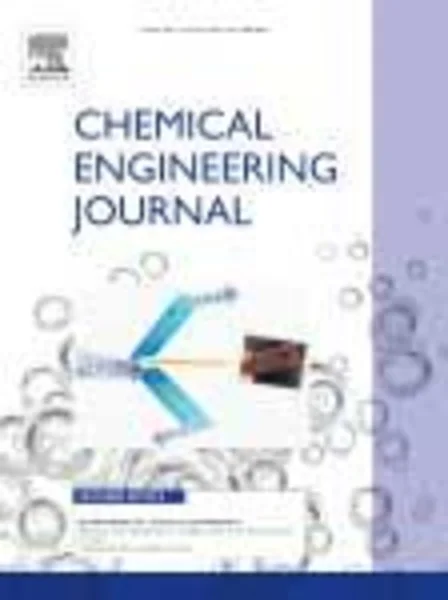-
ozonation-based advanced oxidation for pre-treatment of water with residuals of anti-inflammatory medication
جزئیات بیشتر مقاله- تاریخ ارائه: 1392/01/01
- تاریخ انتشار در تی پی بین: 1392/01/01
- تعداد بازدید: 654
- تعداد پرسش و پاسخ ها: 0
- شماره تماس دبیرخانه رویداد: -
the study is about pre-treatment of water by o3-based aops as o3/uv, o3/ultrasound (o3/us), o3/h2o2, o3/uv/us and o3/us/feso4 to remove residuals of anti-inflammatory pharmaceuticals and to propose a simple modification to an existing drinking water treatment plant (wtp) containing a pre-ozonation unit. experiments were run in ultrapure and raw water (collected from the aeration tank of the wtp) spiked with 30 μm diclofenac-na (dcf)-the model compound to represent anti-inflammatory medication. the results showed that the most effective test processes were o3/us/uv and o3/us/fe2+ (at 2–8 mg l−1 o3, 861 khz us, 254 nm uv irradiation) that were significantly more effective than ozonation alone or other combinations. the outcome was attributed to the synergy of excess mass transfer and oh radical formation rates, and the presence of additional reaction routes and species. as such, 10-min pre-treatment of pure water by o3/uv/us and o3/us/fe2+ provided nearly 90% dcf conversion; 26% and 46% mineralization, respectively. the efficiency of the processes for conversion in raw water was slightly lower, but that of mineralization was appreciably higher (55% and 58%, respectively) to be attributed to the synergy of combinations causing the interaction of excited nom fragments with the intermediate products of dcf, followed by oxidative degradation of all to yield co2. coagulation/flocculation of the pretreated streams (of raw water) with alum and without chemicals respectively provided dcf-free water and about 65% doc mineralization. hence, integration of the existing water treatment facility with either of the above processes is an excellent option to destroy anti-inflammatory pharmaceutical residues such as dcf and to provide appreciable doc elimination, thus reducing the likelihood of thm formation in the distribution system. an additional benefit offered by the second process using a ferrous salt was that it allowed for a chemical-free coagulation basin.
مقالات جدیدترین رویدادها
-
استفاده از تحلیل اهمیت-عملکرد در ارائه الگوی مدیریت خلاقیت سازمانی و ارائه راهکار جهت بهبود
-
بررسی تاثیر ارزش وجوه نقد مازاد بر ساختار سرمایه شرکت های پذیرفته شده در بورس اوراق بهادار تهران
-
بررسی تأثیر سطح افشای ریسک بر قرارداد بدهی شرکت های پذیرفته شده در بورس اوراق بهادار تهران
-
بررسی تأثیر رتبه بندی اعتباری مبتنی بر مدل امتیاز بازار نوظهور بر نقد شوندگی سهام با تأکید بر خصوصی سازی شرکت ها
-
تأثیر آمیخته بازاریابی پوشاک ایرانی بر تصویر ذهنی مشتری پوشاک ایرانی (هاکوپیان)
-
نگرشی به جلوه های سنت خانه های تهران عهد قاجار با تاکید بر فضاهای ورودی
-
بررسی عوامل موثر بر زنجیره تأمین تاب آور (مطالعه موردی: شرکت چینی بهداشتی مروارید یزد)
-
تحلیل اثرات فرهنگ سازمانی بر فرسودگی شغلی کارکنان و ارائه راهکارهای مناسب (بر اساس مدل دنیسن)
-
nonlinear systems with singular vector ϕ-laplacian under the hartman-type condition
-
hybrid neural networks as tools for predicting the phase behavior of colloidal systems
مقالات جدیدترین ژورنال ها
-
مدیریت و بررسی افسردگی دانش آموزان دختر مقطع متوسطه دوم در دروان کرونا در شهرستان دزفول
-
مدیریت و بررسی خرد سیاسی در اندیشه ی فردوسی در ادب ایران
-
واکاوی و مدیریت توصیفی قلمدان(جاکلیدی)ضریح در موزه آستان قدس رضوی
-
بررسی تاثیر خلاقیت، دانش و انگیزه کارکنان بر پیشنهادات نوآورانه کارکنان ( مورد مطالعه: هتل های 3 و 4 ستاره استان کرمان)
-
بررسی تاثیر کیفیت سیستم های اطلاعاتی بر تصمیم گیری موفق در شرکتهای تولیدی استان اصفهان (مورد مطالعه: مدیران شرکتهای تولیدی استان اصفهان)
-
تاثیر تغییرات اقلیمی بر اکوتوریسم شهر خرم آباد
-
ارزیابی تأثیر آموزش تمدد اعصاب (ریلکسیشن) بر بیماری های روانی و کاهش استرس در زنان
-
خوانش هویت شهری با تأکید بر ارزش های فرهنگی نهفته در خاطرات-جمعی شهروندان (مطالعۀ موردی: شهر بجنورد)
-
بررسی اثر رفتار سرمایه گذاران بر رابطه بین ثبات مدیریتی و ارتباطات سیاسی در شرکت های پذیرفته شده در بورس اوراق بهادار تهران
-
بررسی رابطه سبک رهبری توزیعی مدیران با عملکرد شغلی کارکنان بانک ملی استان آذربایجان غربی




سوال خود را در مورد این مقاله مطرح نمایید :